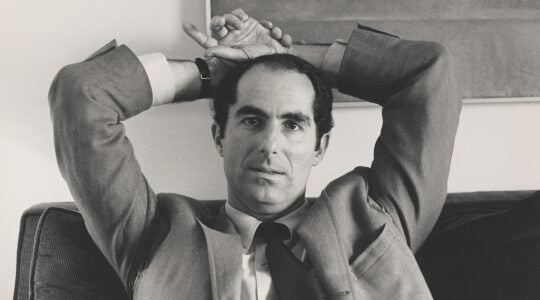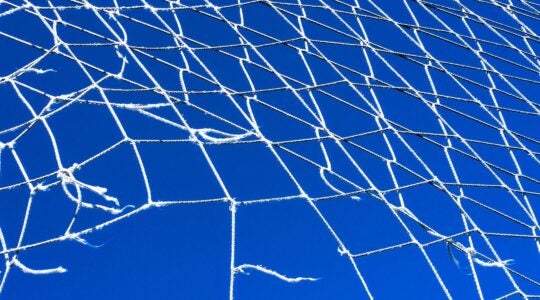Rabbi Avi Shafran, spokesperson for Agudath Israel of America, a Chareidi organization, has stepped into the discussion on the ordination of women rabbis. His article illustrates the weakness of the arguments being brought against ordination, and offers us a view of the choices that the OU has forced itself to make. While he demonstrates a desire to make us think his position is relevant to the OU and Modern Orthodoxy, on closer reading we see that he and the Agudah for which he speaks are entirely irrelevant to the discussion.
He starts by stating that most of a rabbi’s roles can be halachically and effectively assumed by women. “A rabbi must be learned in Jewish texts and the practical laws”. But then he writes that “Orthodox women’s seminaries teach thousands of young Jewish women those laws.” What is missing? The learning of Jewish texts. Rabbi Shafran seems unwilling to legitimize women learning Gemara by mentioning that some actually do just that. While the Modern Orthodox world is celebrating the anniversary of R. Soloveitchik’s inaugural Talmud lecture at Stern College, R. Shafran and the Agudah are mourning the violation of what they consider sacred halacha and precedent. Women, according to them, should not study Talmud.
While the Modern Orthodox world is celebrating the anniversary of R. Soloveitchik’s inaugural Talmud lecture at Stern College, R. Shafran and the Agudah are mourning the violation of what they consider sacred halacha and precedent.
He then writes that a rabbi should provide groups of people with “nourishing food for thought”, and that accomplished Jewish women regularly address groups…. but ”in keeping with halachic modesty-norms, their audiences are comprised of women.” This appears to be what R. Shafran and the Agudah believe and teach, but not the Modern Orthodox. Even the paper prepared for the OU that opposed ordination for women, encouraged women teaching and women being scholars-in-residence, without any mention of gender separation of the audience. R Shafran is trying to show that the Agudah and Modern Orthodoxy are on the same page, but they are not. So it is not rational for the Modern Orthodox to rely on opinions of those who disagree profoundly on fundamental and directly relevant principles such as education for women, and what modestly is and isn’t. On this issue, the Agudah is irrelevant to Modern Orthodoxy in the same way Satmar or Neturei Karta views are irrelevant on issues of Zionism. The basic assumptions are too far apart.
Rabbi Shafran then goes on to argue specifically against the ordination of women[1]. Halacha, Jewish law, has something to say about pretty much everything. But Rabbi Shafran does not muster halachic arguments. If this were a matter where there was a slam dunk halachic argument in his favor, one would have expected him to present it. But it seems that he has nothing of the sort. This is in agreement with Prof. Marc Shapiro who wrote that privately most Orthodox rabbis would admit that there is nothing halachically wrong with the practice. It also jibes with the conclusions of R. Shlomo Brody and R. Michael Broyde[2] who demonstrated that a very legitimate and convincing halachic case can be made for the ordination of women.
On this issue, the Agudah is irrelevant to Modern Orthodoxy in the same way Satmar or Neturei Karta views are irrelevant on issues of Zionism.
Tens of thousands of volumes have been written about halacha, analyzing halacha, arguing over the each and every detail, and weighing one argument against another. The Shulchan Aruch and all the commentary before and after, along with the vast ocean of sources from the Torah up until the most recently penned (or posted) responsa represent halacha. And there are eminent and erudite rabbis, making arguments based on the halacha and the Shulchan Aruch, who have amply illustrated why ordination for women is halachically fine and should be implemented. But Rabbi Shafran wants us to ignore all of that. He says that it isn’t an issue of halacha, and can’t be found in the Shulchan Aruch.
Imagine an Orthodox rabbi telling us that we should not follow halacha. Instead, Rabbi Shafran writes that we should follow what a rabbi or a group of rabbis tell us to do. Other rabbis, no matter how learned, don’t have a voice. The halachic arguments, no matter how well sourced or logical don’t matter. R Shafran is telling us that the only opinion that matters is that of a certain rabbi or group of rabbis. The rabbis he has in mind are certainly great and learned. But, not to take anything away from the greatness and learning of these or any other rabbis, it is not clear why or how they have achieved this position of authority except that someone or a group of people claim that they have. And, more importantly, every other rabbi or group of rabbis is then excluded from authority, even those who may also have studied and learned equally if not more[3]. This is a very Chareidi idea, that only a certain small group of rabbis represent the authoritative voice of God, and that the rest of us are obligated to follow those chosen for us.
One of the leaders of the Agudah even said: “We no longer have to fear Conservatism — that is no longer the danger. Everyone knows that it is avoda zara [idolatry]. What we have to fear is Modern Orthodoxy.’”
We should actually thank R. Shafran for his article, because he has illustrated the choices that the Orthodox Union has forced itself to make. On one hand, they can continue to live and let live. This means accepting as members of the OU a group that is proudly Modern Orthodox, believes in Torah u’Madda, is committed to Torah, mitzvot, halacha, and learning, and follows a well-founded halachic opinion on gender in the public square that isn’t the same as the rest of the OU. There are many issues within the OU where reasonable minds differ and many sides are tolerated – there is no reason why this cannot be one of them[4].
On the other hand, the OU can kick all those people out of the organization, and embrace R. Shafran and the Agudah. But I hope that the OU thinks long and hard about whom they are embracing. The OU is proudly Zionist. The Agudah – not so much. The OU is justifiably proud of the increased presence of women in its leadership positions. Are there women leaders in the Agudah? Yeshiva University is advertising a large conference with many women speaking to mixed genders. Has a women ever spoken at an Agudah convention to a mixed audience or to men? The shield of YU contains the words “Torah u’Madda”. The Agudah embraces those who ban books that mention evolution, challenge the science of the Talmud, or consider that the world is more than 6000 years old. Recall that this is the Agudah whose newspaper, the Jewish Observer, published a disgraceful obituary of R. Joseph B. Soloveitchik. One of the leaders of the Agudah even said [5]: “We no longer have to fear Conservatism — that is no longer the danger. Everyone knows that it is avoda zara [idolatry]. What we have to fear is Modern Orthodoxy.’”
The OU is proudly Zionist. The Agudah – not so much.
The OU certainly can embrace this group, and try to prove their Chareidi street cred by evicting part of its Modern Orthodox constituency. But hopefully the OU understands that R. Shafran and the Agudah do not share the beliefs that are the hallmark of Modern Orthodox and do not respect those who hold those beliefs. Cutting off part of its constituency will bring the OU neither recognition nor respect from the Agudah.
In his closing, Rabbi Shafran encourages the OU and its congregations to display courage and stand up for halachic integrity. I completely agree. As is obvious from the absence of halachic arguments in R. Shafran article, halacha is not on his side. Evicting the congregations in question would be a surrender to social pressure from the Chareidi sector, and make a mockery of any idea of fealty to halacha. But then again, for Rabbi Shafran, it is always about listening to gedolim and Da’as Torah, not halacha. Hopefully the OU will stand up for halacha and Modern Orthodoxy.
Noam Stadlan, MD is Vice-Chairman, Department of Neurosurgery at NorthShore University Healthcare system, and sits on JOFA’s Board of Directors. Read Dr. Stadlan’s other responses to the OU Statement here.
Footnotes:
[1] One of his main arguments – that it is for the wrong motivation – is astonishingly weak, and basically is of the ‘when did you stop beating your wife’ sort of statements. It is hard to imagine how anyone could convince him or anyone else employing this argument that indeed they do have the proper motivation. In addition, it is a completely meaningless argument unless he is willing to stipulate that he would be in favor of ordination if the motivation was up to whatever standards he is judging them by, and, that it was possible to actually achieve those standards. Otherwise his claim is just that it is wrong because he or some others think that it is, and the issue of motivation is simply being used to distract us from the fact that they lack any compelling argument. It is ironic also that those who are most distant from and opposed to the women actually studying for and receiving semicha are the ones who dogmatically claim with certainty that they are the most knowledgeable regarding the motivations of the women involved.
[2] The conclusion of the article is that they were not in favor of the practice since there was not enough rabbinic support for the practice at the time. This position leaves open the option for others to be in favor, and is far different from claiming that it is forbidden because there is not adequate support for it.
[3] I am not going to list all the rabbis who support ordination for women since it only will result in baseless lashon hora when my opponents deride them for a lack of greatness. For the opponents it is a ‘no true Scotsman’ fallacy; any rabbi who supports ordination for women by definition lacks the qualities to qualify as an authoritative Torah voice, and no amount of credential listing will change their mind.
[4] One can think of issues where uniformity is needed. For example, on the Kashrut side, the OU may want to have strict standards so that even the most stringent will eat what they certify. However, whether a synagogue employs female rabbinic clergy has no bearing on any other synagogue or the OU. Similarly, I am not aware of any uniform standards that the OU has for kashrut in its member synagogues. I assume that it defers those decisions to each synagogue. Aside from the mandate to have a mechitza, I am not aware of any standards for the height or the mechitza. The list of issues left to the discretion of each synagogue appears to be seemingly endless, which highlights the question of why the OU has decided to make such an issue out of ordination of women.
[5] “Modern Orthodoxy: An Analysis and a Response,” in Bulka, p. 253 reprinted from the Jewish Observer 6, no. 8, June, 1970, pp. 3-14.
Posts are contributed by third parties. The opinions and facts in them are presented solely by the authors and JOFA assumes no responsibility for them.
If you’re interested in writing for JOFA’s blog contact shira@jofa.org. For more about JOFA like us on Facebook or visit our website.
The New York Jewish Week brings you the stories behind the headlines, keeping you connected to Jewish life in New York. Help sustain the reporting you trust by donating today.




